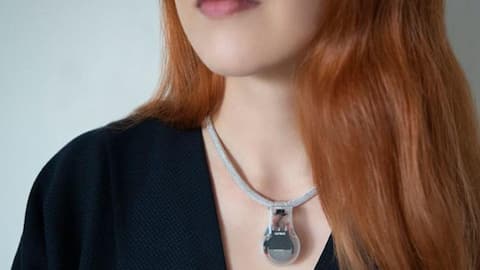NASA develops 3D-printed necklace to help people avoid face-touching
What's the story
The uncontrolled outbreak of COVID-19 has gotten everyone worried.
There is no sign of a vaccine and the only way to protect oneself is by washing hands regularly, avoiding close human contact, and refraining from face-touching.
The latter is deemed particularly important in prevention, and now, to make that happen, NASA has created a novel 3D-printed 'warning' necklace.
Here's how it works.
Device
Device that warns against face-touching
Officially dubbed PULSE, the necklace is a simple 3D-printed device, which, when worn, detects hand movement and triggers haptic feedback to remind you not to touch your face.
It works seamlessly and triggers vibrational alerts as soon as your hand begins to move towards your face. The closer the hand goes to the face, the stronger the resulting vibrational effect would be.
Working
How the device works?
PULSE has been designed by a small team at NASA's Jet Propulsion Laboratory using readily available and affordable components, including a proximity sensor with a 12-inch range, a coin vibrator motor, and a tactile slide switch.
The entire rig rests within a 3D-printed case and is powered by a 3V battery, which ensures that the vibrational feedback is delivered regardless of where you are.
Note
Not meant to replace other protective gear
NASA says PULSE works best when worn/placed about 6 inches below the chin.
However, the agency also emphasizes that the device is not meant to replace other protective gear required to fight the ongoing pandemic.
It is just an additional measure, designed to be used side-by-side with existing efforts, and to ensure that you do not put your infected hands on your face.
Creation
Anyone can create it, regardless of expertise
According to NASA, any individual can reproduce this device, regardless of their level of expertise.
The agency has already made the full list of parts, 3D modeling and printing files, and assembly instructions available under an open-source license and is hoping that PULSE will be reproduced, refined, and distributed openly to reduce the transmission of the virus and keep people as healthy as possible.
